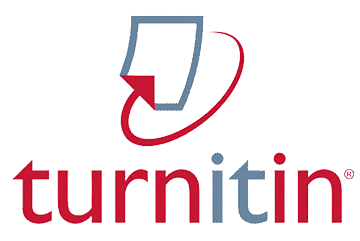| HOME |
| EDITORIAL BOARD |
| PEER REVIEWER |
| FOCUS AND SCOPE |
| PUBLICATION ETHICS |
| AUTHOR GUIDELINES |
| PEER REVIEW PROCESS |
| ONLINE SUBMISSION |
| INDEXING |
| PUBLICATION FEES |
| TEMPLATE |
| TOOLS |
 |
 |
 |
 |
| INDEXING |
 |
 |
About HCE
HCE : Health Community Engagement is officially registered in the Centre for Data and Scientific Documentation (PDDI), Indonesia Institute of Science with ISSN Number 2723-7540 (online). HCE : Health Community Engagement is published twice, on July and December. HCE accept and publish the result of community service and enterpreneurship in the field of health sciences. HCE has a focus and scope : Nursing, Midwifery, Electromedical Engineering, Dental Nursing, Nutrition Health, Environmental Health, Health Analysts, Medical Records and Health Information that focuses on articles of Community Service.
HCE : Health Community Engagement is Open - Access Journal indexed on Google Scholar.
Every article submitted to the HCE : Health Community Engagement will be reviewed within 8-10 weeks and published when the similarity / plagiarism index is under 25% checked by Ithenticate/Turnitin.
To submit an articel to HCE : Health Community Engagement , please following guidelines : Author Guidelines
For those who have not registered in HCE : Health Community Engagement , please register here: Register, If you already have username and password as Author, please login here: Login
Publication Ethics and Malpractice Statement
HEALTH COMMUNITY ENGAGEMENT (HCE) refers to the COPE's Best Practice Guidelines for Journal Editors in regards to publication ethics and malpractice statement. The statement clarifies ethical behaviour of all parties involved in the act of publishing an article in this journal, including the editor-in-chief, the peer reviewers, the associate editors, authors and the publisher.
Ethical Guidelines for Journal Publication
The publication of an article in the peer-reviewed journal, HEALTH COMMUNITY ENGAGEMENT (HCE) is an essential building block in the development of a coherent and respected network of knowledge. It is a direct reflection of the quality of the work of the authors and the institutions that support them. Peer-reviewed articles support and embody the scientific method. It is therefore important to agree upon standards of expected ethical behavior for all parties involved in the act of publishing: the author, the journal editor, the peer reviewer, the publisher and the society.
POLTEKKES KEMENKES SURABAYA as publisher of HEALTH COMMUNITY ENGAGEMENT (HCE) takes its duties of guardianship over all stages of publishing extremely seriously and we recognize our ethical and other responsibilities. We are committed to ensuring that advertising, reprint or other commercial revenue has no impact or influence on editorial decisions.
Publication decisions
The editor of HEALTH COMMUNITY ENGAGEMENT (HCE) is responsible for deciding which of the articles submitted to the journal should be published. The validation of the work in question and its importance to researchers and readers must always drive such decisions. The editors may be guided by the policies of the journal's editorial board and constrained by such legal requirements as shall then be in force regarding libel, copyright infringement and plagiarism. The editors may confer with other editors or reviewers in making this decision.
Fair play
An editor at any time evaluates manuscripts for their intellectual content without regard to race, gender, sexual orientation, religious belief, ethnic origin, citizenship, or political philosophy of the authors.
Confidentiality
The editor and any editorial staff must not disclose any information about a submitted manuscript to anyone other than the corresponding author, reviewers, potential reviewers, other editorial advisers, and the publisher, as appropriate.
Disclosure and conflicts of interest
Unpublished materials disclosed in a submitted manuscript must not be used in an editor's own research without the express written consent of the author.
Duties of Reviewers
Contribution to Editorial Decisions
Peer review assists the editor in making editorial decisions and through the editorial communications with the author may also assist the author in improving the paper.
Promptness
Any selected referee who feels unqualified to review the research reported in a manuscript or knows that its prompt review will be impossible should notify the editor and excuse himself from the review process.
Confidentiality
Any manuscripts received for review must be treated as confidential documents. They must not be shown to or discussed with others except as authorized by the editor.
Standards of Objectivity
Reviews should be conducted objectively. Personal criticism of the author is inappropriate. Referees should express their views clearly with supporting arguments.
Acknowledgement of Sources
Reviewers should identify relevant published work that has not been cited by the authors. Any statement that an observation, derivation, or argument had been previously reported should be accompanied by the relevant citation. A reviewer should also call to the editor's attention any substantial similarity or overlap between the manuscript under consideration and any other published paper of which they have personal knowledge.
Disclosure and Conflict of Interest
Privileged information or ideas obtained through peer review must be kept confidential and not used for personal advantage. Reviewers should not consider manuscripts in which they have conflicts of interest resulting from competitive, collaborative, or other relationships or connections with any of the authors, companies, or institutions connected to the papers.
Duties of Authors
Reporting standards
Authors of reports of original research should present an accurate account of the work performed as well as an objective discussion of its significance. Underlying data should be represented accurately in the paper. A paper should contain sufficient detail and references to permit others to replicate the work. Fraudulent or knowingly inaccurate statements constitute unethical behaviour and are unacceptable.
Data Access and Retention
Authors are asked to provide the raw data in connection with a paper for editorial review, and should be prepared to provide public access to such data.
Originality and Plagiarism
The authors should ensure that they have written entirely original works, and if the authors have used the work and/or words of others that this has been appropriately cited or quoted.
Multiple, Redundant or Concurrent Publication
An author should not in general publish manuscripts describing essentially the same research in more than one journal or primary publication. Submitting the same manuscript to more than one journal concurrently constitutes unethical publishing behaviour and is unacceptable.
Acknowledgement of Sources
Proper acknowledgment of the work of others must always be given. Authors should cite publications that have been influential in determining the nature of the reported work.
Authorship of the Paper
Authorship should be limited to those who have made a significant contribution to the conception, design, execution, or interpretation of the reported study. All those who have made significant contributions should be listed as co-authors. Where there are others who have participated in certain substantive aspects of the research project, they should be acknowledged or listed as contributors. The corresponding author should ensure that all appropriate co-authors and no inappropriate co-authors are included on the paper, and that all co-authors have seen and approved the final version of the paper and have agreed to its submission for publication.
Hazards and Human or Animal Subjects
If the work involves chemicals, procedures or equipment that have any unusual hazards inherent in their use, the author must clearly identify these in the manuscript.
Disclosure and Conflicts of Interest
All authors should disclose in their manuscript any financial or other substantive conflict of interest that might be construed to influence the results or interpretation of their manuscript. All sources of financial support for the project should be disclosed.
Fundamental errors in published works
When an author discovers a significant error or inaccuracy in his/her own published work, it is the author's obligation to promptly notify the journal editor or publisher and cooperate with the editor to retract or correct the paper.
Author Guidelines
Every submitted paper is independently reviewed by at least two peer reviewers. Decision for publication, amendment, or rejection is based upon their reports/recommendation. If two or more reviewers consider a manuscript unsuitable for publication in this journal, a statement explaining the basis for the decision will be sent to the authors within three months of the submission date.
Manuscripts sent back to the authors for revision should be returned to the editor without delay. Revised manuscripts can be sent to editorial office through the Online Submission Interface. The revised manuscripts returned later than three months will be considered as new submissions.
Manuscript content should be organized in the following order: Title; Authors Name; Authors Affiliation; Abstract; Keywords; Introduction; Method; Findings and Discussion; Conclusions; Acknowledgements; and References.
6.1. Paper Title
6.2. Authors Name and Affiliations
6.3. Abstract and Keywords
6.4. Introduction
6.5. Method
6.6. Results and Discussion
6.7. Conclusions
6.8. Acknowledgement
6.9. References
Peer Review Process
Every article that goes to the editorial staff will be selected through Initial Review processes by Editorial Board. Then, the articles will be sent to the Mitra Bebestari/ peer reviewer and will go to the next selection by Double Blind Preview Process. After that, the articles will be returned to the authors to revise. These processes take a month for a maximum time. In the each manuscript, Mitra Bebestari/ peer reviewer will be rated from the substantial and technical aspects. Mitra Bebestari/ peer reviewer that collaboration with Jurnal Health Community Engagement (HCE) is the experts in the Health Science and Technology area and issues around it. They were experienced in the prestigious journal management and publication that was spread around the national and abroad.
All submitted manuscripts are evaluated by editorial staff. Those Manuscript evaluated by editors to be inappropiate to journal criteria are rejected promptly without external review. Manuscript evaluated to be of potential interest to our readership are sent to double bilnd reviewers. The editors then make a decision based on the reviewer's recommendation from among several possibilities : rejected, revision required, or accepted.
The editor has the right to decide which manuscripts submitted to the journal should be published. Review Process :
Online Submissions
Already have a Username/Password for HCE?
GO TO LOGIN
Need a Username/Password?
GO TO REGISTRATION
Registration and login are required to submit items online and to check the status of current submissions.
ABSTRACTING AND INDEXING
PUBLICATION FEES
This journal charges the following author fees.
Article Submission: Rp. 0.000
Authors are NOT required to pay an Article Submission Fee.
PAPER TEMPLATE
